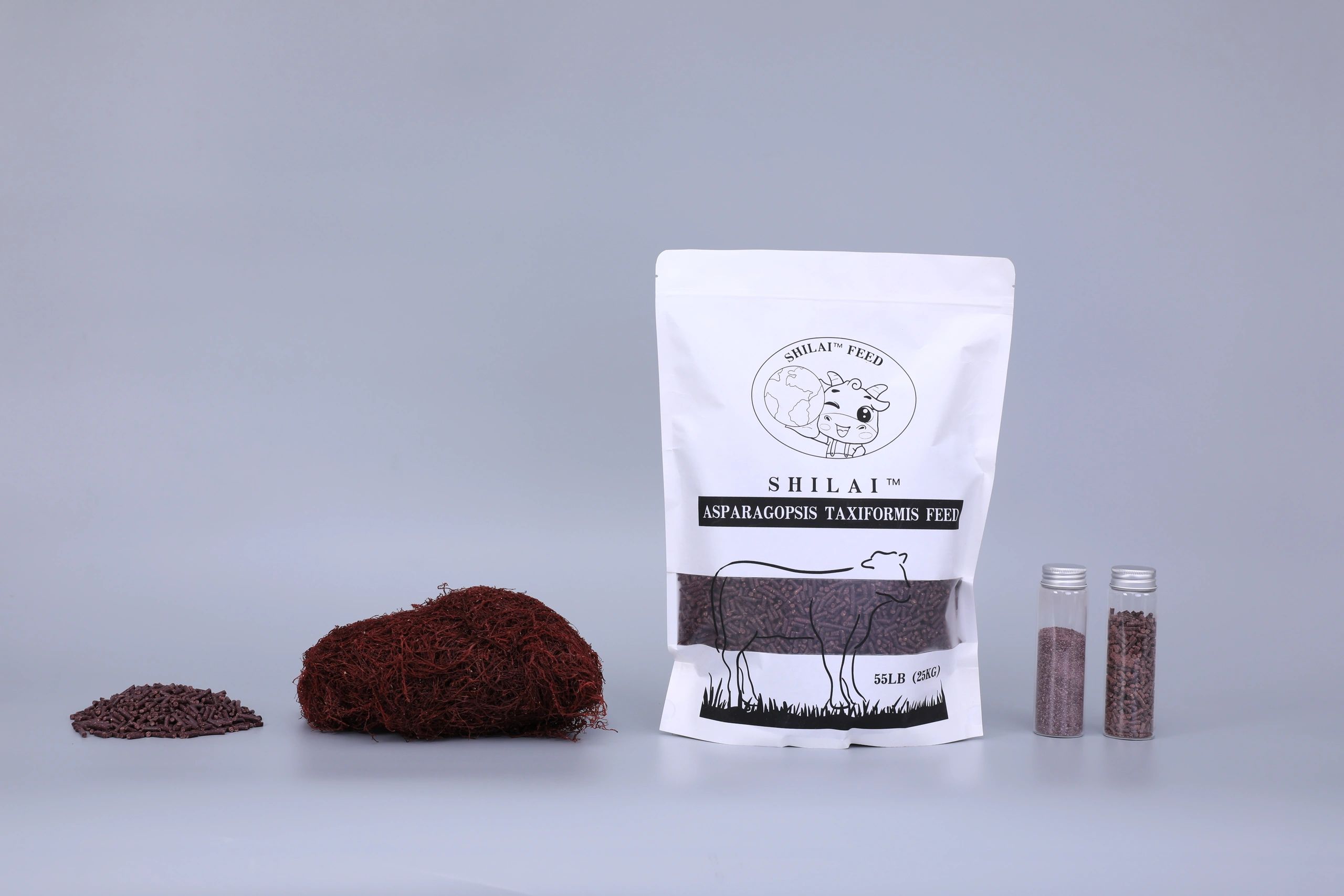The global agricultural sector is a major source of greenhouse gas emissions, especially from livestock farming.
Because methane traps far more heat per molecule than carbon dioxide, its emissions are particularly harmful to the climate.
A red seaweed called Asparagopsis taxiformis has surfaced as a potential game-changing tool to lower methane produced by grazing animals.
The alga carries a bioactive agent that inhibits the rumen microbes responsible for methane, lowering emissions from animals.
Blending Asparagopsis taxiformis into animal feeds has returned positive early-stage evidence for cutting methane from ruminant animals.
- Beyond reducing methane, Asparagopsis taxiformis presents multiple ancillary benefits for livestock systems.
- Greater nutrient uptake and robustness
- Opportunities for economic growth in rural communities
Additional scientific and practical work is necessary, but Asparagopsis taxiformis stands out as a promising pathway to greener livestock production.
Unlocking the Potential of Asparagopsis taxiformis Powder as a Feed Additive
Using Asparagopsis taxiformis in powdered concentrate form could markedly improve feed solutions for livestock.
Its biochemical profile offers nutrients and functional compounds that may boost animal growth and efficiency.
Adding A. taxiformis powder to formulations has produced methane reductions in experiments and may enrich feeds with vital micronutrients.
Sustained R&D is needed to finalize dosage regimes, processing protocols, and long-term performance and safety evidence.
The Role of Asparagopsis taxiformis in Shaping Sustainable Animal Farming
Asparagopsis taxiformis is becoming notable as an option to confront the environmental issues driven by common animal agriculture practices.
Using the algae as a feed ingredient offers a pathway for farmers to reduce methane and improve the environmental profile of production.
Studies have reported potential co-benefits for animal welfare and productivity when Asparagopsis is used in feed.
While comprehensive long-term data and commercialization pathways are still being developed, early results are promising.
Methane Reduction Through Asparagopsis Feed Additive
The species offers a promising mechanism to curtail methane emissions originating from ruminant digestive processes.
Compounds in Asparagopsis act on rumen microorganisms to suppress methanogenesis and lower methane output.
- Research evidence points to pronounced methane reductions in trials where Asparagopsis was used in feeds.
- Adopting Asparagopsis in feeds offers an eco-friendly option to address methane from livestock.
- Agricultural stakeholders are evaluating the practical adoption of Asparagopsis within farm feed programs.
Asparagopsis: Seaweed Fueling Sustainable Change in Animal Agriculture
Ocean-sourced Asparagopsis taxiformis is gaining recognition for its capacity to reduce methane in ruminant digestion.
- Inclusion of the seaweed in animal feeds produced significant methane cuts in research trials with clear climate implications.
- The innovation creates potential to advance food security and environmental stewardship simultaneously.
Within the portfolio of climate mitigation approaches, Asparagopsis is notable for its novel potential to lower methane from animals.
Optimizing Methane-Cut Feed with Asparagopsis taxiformis
Research targets include processing optimization and dosage determination to increase A. taxiformis impact on methane reduction.
The Science Behind Asparagopsis taxiformis's Methane-Lowering Effects
The scientific explanation centers on the seaweed’s bioactives inhibiting methanogenic archaea and thereby lowering methane output.
The seaweed’s methane reduction is associated with bromoform compounds, which are under active investigation for mechanisms and risk assessment.
Incorporating Asparagopsis into Feed Recipes to Advance Sustainable Production
Asparagopsis’s nutritional profile and methane-cutting bioactives make it an attractive candidate for inclusion in modern feed formulations.
Incorporating the species into feeds may raise nutrient levels, optimize digestion, and contribute protective antimicrobial actions.
Leveraging Asparagopsis taxiformis for Environmental Gains in Food Production
Asparagopsis taxiformis is emerging as a notable marine-derived option to help address climate and environmental challenges in food systems.
- In addition, Asparagopsis provides nutrient advantages that strengthen feed quality.
- Experts across sectors are mobilizing to research Asparagopsis applications in both marine and land-based food systems.
Scaling Asparagopsis use in feeds may translate into significant declines in agriculture-related greenhouse gas emissions.
Asparagopsis Feed Inclusion: Positive Effects on Health and Productivity
The seaweed is gaining recognition for potential dual benefits: emissions reduction and enhancements in animal performance.
Trial data suggests Asparagopsis can enhance nutrient assimilation and feed conversion, contributing to better weight performance.
Observed functional properties include antioxidant and immune-supportive actions that could protect animal health.
The momentum behind sustainable livestock practices enhances the appeal of Asparagopsis as studies and commercialization advance.
A Sustainable Trajectory: Methane-Cut Feeds Based on Asparagopsis
As the agricultural sector seeks pathways to emissions reduction, Asparagopsis stands out as an implementable methane mitigation measure.
- The leading hypothesis is that the seaweed’s constituents suppress methanogenic microbes and disrupt methane synthesis in the rumen.
- Research trials have repeatedly demonstrated meaningful methane reductions linked to Asparagopsis dietary inclusion.
Beyond being a lower-emission feed choice, the approach could help reorient food production to align with climate resilience goals.
